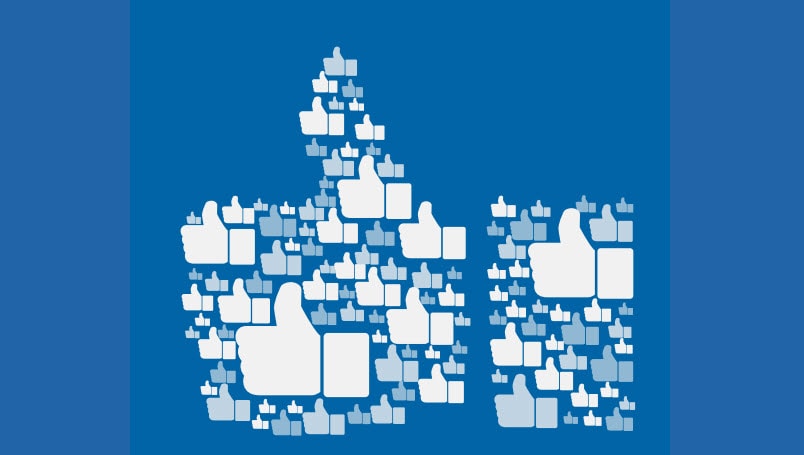Research shows that over 95 percent of social media marketers agree that Facebook offers the best return on investment out of all social media platform campaigns. This means that there are many ways to fully utilize all that Facebook has to offer for marketing and converting customers. One of the best ways to do this is with Facebook Ads. Facebook’s algorithm prioritizes content from users’ friends and family, which means it chooses who sees the Facebook posts organically. Don’t ever assume that even most of the Business followers will see them organically because it just doesn’t happen that way. So, the best way to reach the entire audience and target certain groups is with Facebook Ads.
Much like a commercial, a Facebook Ad is content that someone pays to share with a specific targeted audience. This is the best way to get the Business and brand in front of the right people and achieve conversion goals. Facebook has a huge global audience and their Ads offer very detailed targeting options, which is great news for Facebook Marketers. Their advertising designs offer goal-oriented options both on and off the network, so it is important to know how to use them. This will briefly cover all that the Facebook Ad’s platform has to offer.
Facebook Ad Campaigns And Business Goals
Here is a quick rundown of the different types of Facebook Ad campaigns and how they can be used to meet specific business goals.
App Installs – These encourage installation of a mobile or desktop application and they are great for encouraging daily interaction.
Brand Awareness – This is specifically designed to introduce a new brand to an audience and cultivate familiarity.
Conversions – These are set up to inspire people to take specific action such as buy something from a website or subscribe to a newsletter.
Engagement – This is primarily used to expand an audience. It is often used to increase the number of Page views in addition to boosting the number of Likes, Shares, comments or photo views. It is also great for promoting events.
Lead Generation – This is a great way to feed new prospects into the sales funnel.
Reach – This is specifically to increase exposure only. It is used to get Ads in front of as many eyeballs as possible.
Product Catalog Sales – This is used to connect Facebook Ads to a product catalog. It specifically shows people ads for the products they are most likely to purchase.
Store Visits – This is used to drive consumers to brick and mortar stores.
Traffic – Obviously, this drives targeted traffic to a specific webpage.
Video Views – This helps increase brand awareness by showing a video to a large audience.
See, it’s a lot of info. However, those are just the various Facebook Campaign objectives. Now for the Facebook Advertising formats:
Facebook Photo Ads
Photo Ads don’t have to be boring, they can be creative and garnish attention. Keep in mind that simple Photo Ads shouldn’t be crowded with text screaming for attention. Facebook penalizes text-heavy images, so keep the text to less than 20 percent as a rule and it will be more widely distributed.
Facebook Video Ads
There are headline and text limits and the video can only be 120 minutes in length. Video Ads are a fantastic way to create massive engagement if they are done right. Scroll through Facebook for some Video Ads and see where all the shares and comments are, then take notes.
Facebook Slideshow Ads
This is a video created from up to ten still images with a text limit of 90 characters. Slideshow Ads have a 40 percent higher click-through rate than Photo Ads and they offer an amazing 85 percent increase return on ad spend.
Facebook Carousel Ads
These let brands show multiple images, up to ten photos or video plus text, and ultimately link to some action.
The total maximum length is up to two minutes combined and seems to be driving up to 10 times more traffic to advertisers’ websites.
Facebook Collection Ads
This is a mobile only ad format that showcases products specifically for traffic conversions. This is Facebook newsfeed on Mobile to show off products.
Facebook Canvas Ads
This is a full-screen experience built to deliver fully-immersive and interactive ads. Users don’t even have to click out of the ad to engage with the mobile content. This format incorporates up to twenty photos, text and video.
Facebook Lead Ads
This is a lead generation format that offers a pre-populated form which makes it easy to connect with the audience individually. These allow advertisers to collect information from prospects instead of sending them to a landing page.
Facebook Pixel
A Facebook Pixel is a code that is placed on a website to track conversions from Facebook Ads. It is also great to help optimize future Ads based on collected data and remarketing to qualified leads. Facebook Pixels work by triggering cookies which track users as they interact with the website and the Facebook Ads. Even if Facebook Ads will not be an immediate part of the marketing campaign, it is a good idea to go ahead and place the Facebook Pixel now. It will begin tracking and collecting data as soon as it is placed so that when the time is right, customized targeted audience data will be ready for the Facebook Ad Campaign.
Marketing with Facebook can drive increased exposure to your business. Knowing which avenues to take, how to incorporate each of them, and how to execute them properly is what determines whether you are wasting your time or not.
Understanding the difference between each of the advertising methods will give you an edge over your competition.








